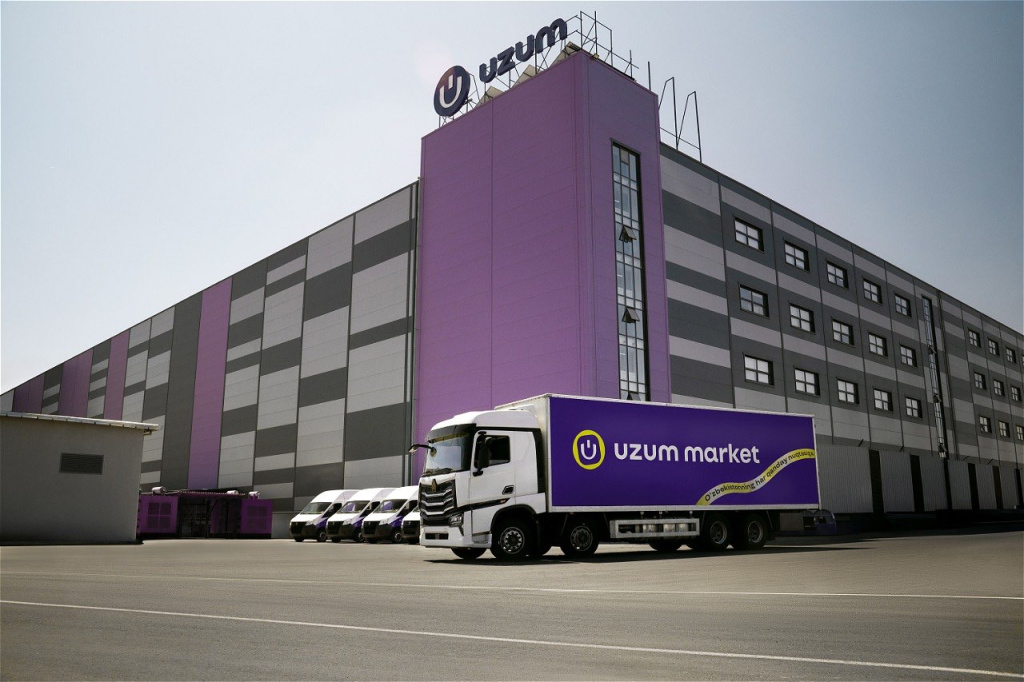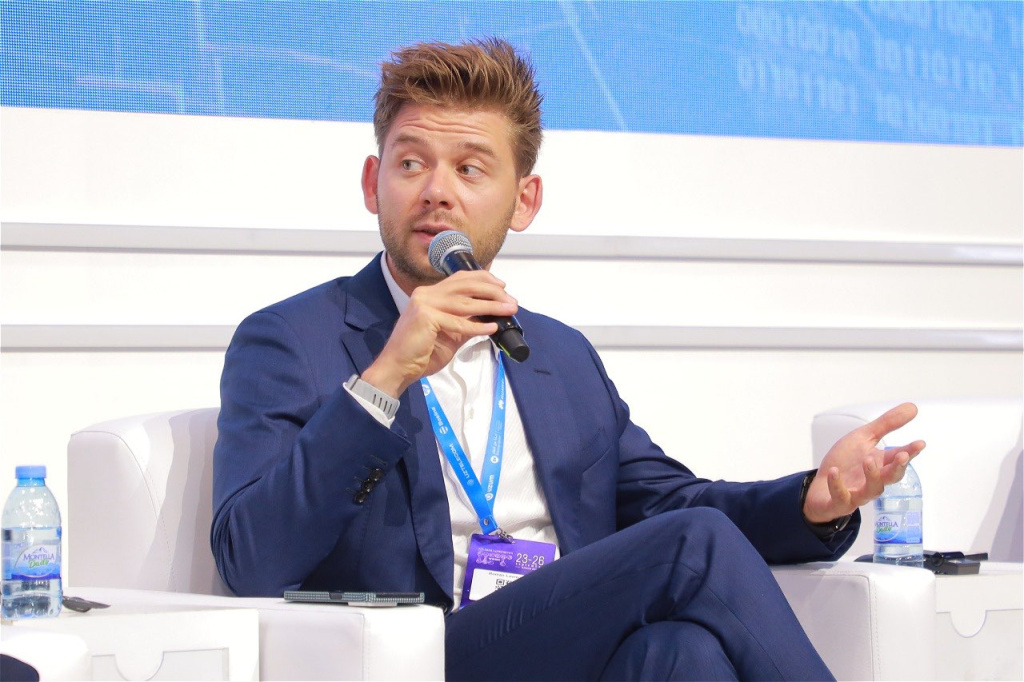Uzum: Building an Ecosystem for Millions and Digital Transformation in Action
The Uzum digital ecosystem became the first technology "unicorn" in Uzbekistan in 2024 and continues to grow. The Global CIO editorial team spoke with Roman Lavrentiev, COO of Uzum. An IT leader with a product background, he has built companies whose solutions operated from North America to Africa. Today, his experience in scaling global IT products is helping to build a key digital ecosystem in Uzbekistan.

Interviewer: Uzum is an ecosystem with about 17 million users already, integrating delivery, fintech, banking, and other services. Tell our readers: what organizational challenges does integrating all these services present?
Roman: You rightly noted: today Uzum is a digital ecosystem that includes an e-commerce vertical (food delivery and the country's largest marketplace), fintech services, including a digital bank, and products like Buy Now, Pay Later, an installment service. Almost half the country uses our services daily. On one hand, this is an amazing figure that we are very happy and proud of, and on the other hand, it's a significant organizational challenge.
From the very beginning, when designing the company, we thought about building not a set of disparate services, but a unified company where each service helps, complements, and strengthens the others. When there are so many different services inside a company, each solving a specific user problem, it's very difficult to harmonize and synchronize them.
In terms of organizational challenge, it's very important for us to ensure common goal-setting for all business units. Here we use the OKR methodology: goals cascade down to each business unit. There's a rule in the team: "the common good is more important than the individual." The goals of the ecosystem are more important than the goals of a specific service. That's the first point.
Second, we are actively scaling. This is also a challenge: solutions that worked a year or two ago at certain order or transaction volumes may now be ineffective. We need to review rules, approaches, methodologies, and sometimes even redo parts of products and infrastructure to ensure growth and, especially important now, stability. The customer base is very large, the number of orders and the load on all systems are high. Therefore, the focus now is not only on growth but also on stability across all business areas.
Explore the full interview in the IT Leaders Club:
What infrastructure powers seamless services for 17 million users: the scale of offline operations behind the digital facade. How integrating proprietary fintech into e-commerce changes platform architecture—the share of turnover running through internal financial infrastructure and lessons from building a payments ecosystem at national scale.
Interviewer: From what you've said, I understand there's a combination of organizational and technological challenges. At this current stage of scaling, which ones seem more complex and what do they consist of?
Roman: I've already mentioned the technological challenges: we have several business units and many services. Initially, we aimed to make the services as independent as possible so they could quickly enter the market and reduce time-to-market. This gave freedom in choosing technological solutions. Now it's important to create a harmonized, unified platform that, on one hand, doesn't reduce development speed, and on the other, brings everything to a more homogeneous state so that services integrate easily with each other.
The teams have done a good job: most services were developed based on a microservices architecture, which allows for quick integration. Nevertheless, the key technological challenge is bringing the platform to a unified state so that we can create products even faster, without looking back at legacy systems.
The second key technological challenge is infrastructure stability. For the past year and a half, we have been focusing on independently supporting IT infrastructure and vertical integration to ensure uninterrupted operation of all systems.
The organizational challenge lies in synchronization. It's important to constantly receive feedback from the market, track changes in user behavior – especially now, when customer needs change frequently. On the other hand, it's important not to lose focus. Therefore, synchronization and harmonization of goals among all business units is the key organizational challenge.

Interviewer: Understood. Thank you. Returning to technological tasks: are there specific tools that help solve them? Maybe some discoveries? For example, you say that working with infrastructure in the context of scaling requires additional effort. Stacks need to be unified. How does that look?
Roman: We have a clear, classic position. There is no goal to do a global refactoring and bring everything to a uniform technology stack. The main rule is the independence of services from each other so that each can develop quickly. The second is the ability to quickly and easily integrate one service into another. This is a key task. We are actively integrating fintech services into e-commerce and vice versa. This requires flexible integration capabilities for products.
For solving this task we use classic development approaches. Each team has the ability to independently determine the product stack and approach that is comfortable for them. For example, in banking products, it's sometimes necessary to use waterfall: project management, task descriptions, and technical specifications. In other teams, where customer needs have high uncertainty, we switch to Agile practices: the product and technical teams work together, constantly communicating with the customer, getting feedback after each release, and refining the product on the fly.
The main thing is not the technology stack itself, but the business tasks that a particular approach solves.
Explore the full interview in the IT Leaders Club:
Three components of motivating 12,000 people amid an acute shortage of developers and highload experts—what works beyond salary and why the COO himself is a member of the running club. How they close the talent gap for critical competencies: experience working with universities and the practice of attracting specialists from other continents.
Interviewer: Summarizing your experience, what trends in the development of digital ecosystems can be expected for developing countries? What operational models might become defining?
Roman: There are several trends, and we ourselves are becoming trendsetters in Uzbekistan. The first and main one: we believe that in developing markets, the only path for an effective business model in the future is the inseparability of e-commerce and fintech from the perspective of customer journeys. This is already a customer requirement: the ability to quickly buy a product where the money is stored and get the best offer.
People are beginning to trust financial management to companies that offer both commercial and financial products because the movement of money happens inside the ecosystem, and the benefits are shared with customers. For example, increased bonuses or discounts for Uzum cardholders in Uzum Market. This requirement is turning into a necessity to have one's own financial infrastructure for an e-commerce player to be competitive. This is a trend in developing markets.
The second trend – customers want a seamless experience. You need to be everywhere: in the app, on the web, in a Telegram bot, on social networks, and offline, so that the customer can interact at any touchpoint. We are actively developing as a multi-channel player.
The third trend is personalization. You can't offer the same thing to everyone; you need to understand what the customer wants and offer them what they need. We are also moving in that direction.
These three trends define the development of ecosystems in developing markets.
Interviewer: Thank you. Last question: what do you consider the most important achievement of your company in the past year, and what challenges do you see for the coming year?
Roman: The main achievement is that we have built an ecosystem that truly works and benefits customers. This is evident from the numbers and feedback. As for challenges – it's scaling: how we will grow further and develop the team, infrastructure, and products. These are the main challenges for the coming year.


